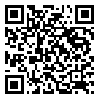Volume 10, Issue 3 (Journal of Science and Technology of Greenhouse Culture 2019)
2019, 10(3): 13-22 |
Back to browse issues page
1- Dept. of Hort. Sci., College of Agric. and Nat. Resour., Arak Univ., Arak, Iran , khaleghi979@gmail.com
2- Dept. of Hort. Sci., College of Agric. and Nat. Resour., Islamic Azad Univ., Sci. and Res. Branch, Tehran, Iran
3- Dept. of Hort. Sci., Agric. and Nat. Resour. Campus, Univ. of Tehran, Karaj, Iran
2- Dept. of Hort. Sci., College of Agric. and Nat. Resour., Islamic Azad Univ., Sci. and Res. Branch, Tehran, Iran
3- Dept. of Hort. Sci., Agric. and Nat. Resour. Campus, Univ. of Tehran, Karaj, Iran
Abstract: (3676 Views)
Tomato is one of the most important horticultural crops that is corruptible and susceptible to microbial contamination. In this study, the effect of UV-C at five different irradiation intensities (0, 3, 6, 9 and 12 kJ/m2) on rot control and postharvest quality of greenhouse tomato was investigated. Tomato (cv. Newton) fruits were harvested from a commercial greenhouse at vine-ripe stage and after treatment, were stored at 10 °C and relative humidity of 85-90%. Qualitative characteristics of the fruits such as decay rate, firmness, vitamin C, total soluble solids, titratable acidity, ripening index, weight loss and color (L*, a*, b*, Hue and Chroma) were evaluated after 7, 14, 21 and 28 days of cold storage. Results showed that vitamin C, firmness and color values were decreased; while weight loss percentage and decay rate were increased during the storage period. UV-C treatments did not have significant effect on traits of color, ripening index, weight loss percentage, firmness and pH. But the fruits treated with UV-C at 6 kJ/m2 dose had low decay rate as compared to control. The highest vitamin C content was obtained in treated fruits with 12 kJ/m2 of UV-C on twenty-first day of storage. Total soluble solids and titratable acidity were decreased in high doses of UV-C treatment. According to the results, it can be concluded that UV-C treatment of tomato fruits at vine-ripe stage, at its optimal doses, can reduce fruit decay and maintain or increase its antioxidant capacity, including vitamin C.
Type of Study: Research |
Received: 2017/08/23 | Accepted: 2018/11/16 | Published: 2019/10/9
Received: 2017/08/23 | Accepted: 2018/11/16 | Published: 2019/10/9
Send email to the article author
| Rights and permissions | |
 |
This work is licensed under a Creative Commons Attribution-NonCommercial 4.0 International License. |









